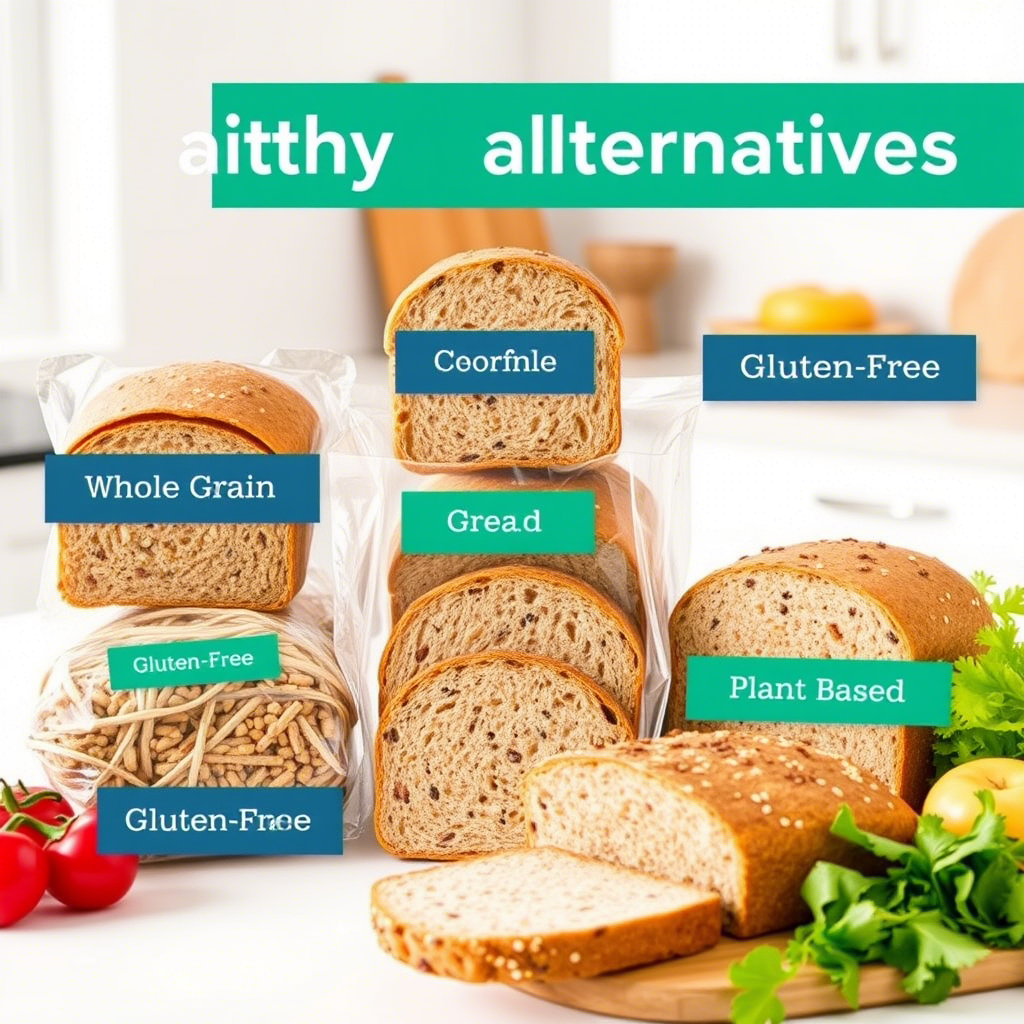Do you ever find yourself reaching for a slice of bread, only to pause and wonder if there’s a healthier option? In today’s world, where health-conscious choices are becoming increasingly important, many people are seeking alternatives to traditional white bread.
Whether it’s due to dietary restrictions, lifestyle changes, or simply wanting to make smarter food decisions, the good news is that there are plenty of delicious and nutritious options available.
From whole grains to innovative plant-based substitutes, this article will guide you through some of the best bread alternatives that can elevate your meals while supporting your wellness goals. Let’s dive into how small swaps can lead to big benefits!
1. Why Whole Grains Matter
When it comes to choosing healthier bread alternatives, whole grains often take center stage. Unlike refined grains found in white bread, whole grains retain all parts of the grain kernel—the bran, germ, and endosperm—offering more fiber, vitamins, and minerals. According to the USDA, diets rich in whole grains have been linked to reduced risks of heart disease, type 2 diabetes, and certain cancers.
For example, swapping out white bread for whole wheat or rye bread not only increases your intake of essential nutrients but also keeps you fuller longer thanks to its higher fiber content.
Plus, whole grains add a satisfying texture and nutty flavor to sandwiches, toast, and even desserts. If you’re new to incorporating whole grains into your diet, start by experimenting with recipes like oatmeal pancakes or quinoa salads as stepping stones toward adopting healthier habits.
2. Exploring Gluten-Free Options
If you follow a gluten-free diet, finding suitable bread alternatives might seem challenging at first. However, the market now offers an impressive array of options made from alternative flours such as almond, coconut, chickpea, and rice flour.
These products cater to individuals with celiac disease, gluten sensitivity, or those who simply prefer avoiding gluten.
One popular choice is sourdough bread, which uses natural fermentation instead of commercial yeast. This process breaks down gluten proteins, making it easier to digest for some people.
Another great option is cassava bread, derived from the root vegetable cassava, known for its light texture and neutral taste. By exploring these alternatives, you’ll discover that going gluten-free doesn’t mean sacrificing flavor or variety.
3. Plant-Based Innovations
Beyond traditional grains, plant-based innovations are revolutionizing the way we think about bread. Products made from seeds, nuts, and legumes provide protein-packed alternatives that align perfectly with vegetarian, vegan, and paleo lifestyles.
For instance, flaxseed crackers offer a crunchy substitute for regular bread slices when paired with avocado or hummus. Similarly, chickpea flatbreads serve as a versatile base for wraps or pizzas.
These alternatives are not just trendy; they’re packed with nutritional value. Seeds like chia and hemp contribute omega-3 fatty acids, while nuts deliver healthy fats and protein.
Incorporating them into your daily routine ensures you’re fueling your body with nutrient-dense foods without compromising on taste. As you experiment with these options, remember that creativity is key—don’t hesitate to try unconventional combinations to keep things exciting!
4. Ancient Grains: The Powerhouses of Nutrition
Ancient grains like quinoa, amaranth, millet, and teff are gaining popularity for their impressive nutritional profiles. Often referred to as “superfoods,” these grains contain high levels of protein, fiber, and essential amino acids. They’re also naturally gluten-free, making them ideal for those following specific diets.
Quinoa, for example, is one of the few plant foods considered a complete protein, containing all nine essential amino acids.
Amaranth, another powerhouse, boasts calcium and iron, promoting bone health and energy production. Adding these grains to your meals can be as simple as using quinoa flour in baking or substituting millet for breadcrumbs in recipes.
Their versatility makes them easy to integrate into any cuisine, whether you’re preparing breakfast bowls or savory entrees.
5. Embracing a Balanced Approach
Ultimately, the journey to healthier eating isn’t about eliminating bread entirely—it’s about making informed choices that support your overall well-being.
By embracing a balanced approach, you can enjoy the convenience and comfort of bread while prioritizing nutrition. Start by gradually introducing whole grains, gluten-free options, and plant-based alternatives into your diet. Over time, you’ll notice improvements in digestion, sustained energy levels, and overall vitality.
Take inspiration from real-life success stories, like Sarah, who swapped her morning bagel for a slice of sprouted grain bread topped with almond butter.
She reported feeling more energized throughout the day and noticed a reduction in bloating after just two weeks. Stories like hers remind us that small changes can yield significant results. So why not begin today?
Conclusion
In conclusion, healthy bread alternatives offer endless possibilities for enhancing both your diet and lifestyle. From whole grains and gluten-free options to ancient grains and plant-based innovations, the choices are vast and varied.
Each alternative brings unique benefits, empowering you to tailor your selections based on personal preferences and nutritional needs.
As you explore these options, remember that balance is key. Aim to incorporate a mix of these alternatives into your meals, allowing yourself the freedom to enjoy what you eat while nourishing your body.
We encourage you to share your favorite discoveries in the comments below or try something new this week. Together, let’s redefine what it means to eat healthy—one slice at a time!

Thayná Alves is an influential digital content creator who has carved out a significant space in the realms of technology, finance, and entrepreneurship. Through her blog, Newbacker.com , she stands out as an authentic and accessible voice for individuals seeking practical information about investments, innovation, and emerging trends in the financial market.

